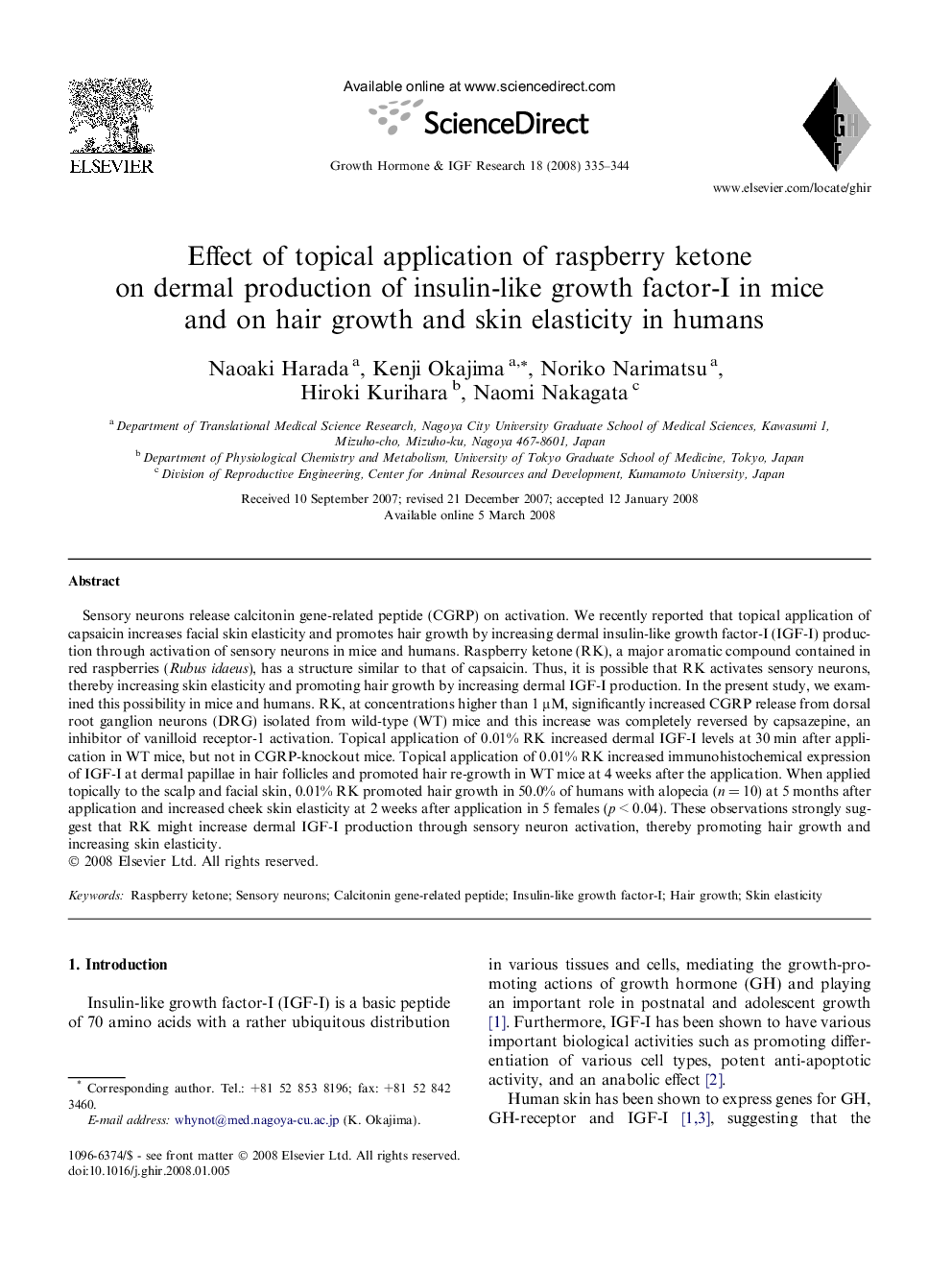| Article ID | Journal | Published Year | Pages | File Type |
|---|---|---|---|---|
| 2803395 | Growth Hormone & IGF Research | 2008 | 10 Pages |
Sensory neurons release calcitonin gene-related peptide (CGRP) on activation. We recently reported that topical application of capsaicin increases facial skin elasticity and promotes hair growth by increasing dermal insulin-like growth factor-I (IGF-I) production through activation of sensory neurons in mice and humans. Raspberry ketone (RK), a major aromatic compound contained in red raspberries (Rubus idaeus), has a structure similar to that of capsaicin. Thus, it is possible that RK activates sensory neurons, thereby increasing skin elasticity and promoting hair growth by increasing dermal IGF-I production. In the present study, we examined this possibility in mice and humans. RK, at concentrations higher than 1 μM, significantly increased CGRP release from dorsal root ganglion neurons (DRG) isolated from wild-type (WT) mice and this increase was completely reversed by capsazepine, an inhibitor of vanilloid receptor-1 activation. Topical application of 0.01% RK increased dermal IGF-I levels at 30 min after application in WT mice, but not in CGRP-knockout mice. Topical application of 0.01% RK increased immunohistochemical expression of IGF-I at dermal papillae in hair follicles and promoted hair re-growth in WT mice at 4 weeks after the application. When applied topically to the scalp and facial skin, 0.01% RK promoted hair growth in 50.0% of humans with alopecia (n = 10) at 5 months after application and increased cheek skin elasticity at 2 weeks after application in 5 females (p < 0.04). These observations strongly suggest that RK might increase dermal IGF-I production through sensory neuron activation, thereby promoting hair growth and increasing skin elasticity.
